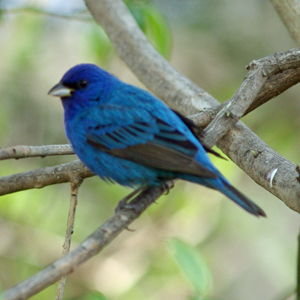Bats of Iowa
Vespertilionidae
Myotis lucifugus (LeConte)
Little Brown Bat or Little Brown Myotis

Etymology
Appearance
Fur:
Glossy, yellowish to dark brown above; paler below; hair-basal half
contrasting light tip.
Tail membrane:
Dark brown, mostly naked.
Wing membrane:
Dark brown, mostly naked except scattered hairs and basal fur.
Calcar:
None or slightly keeled.
Ears:
Small «16 mm), do not extend 2 mm beyond nostrils when laid forward;
dark brown and naked; narrow with bluntly rounded tip.
Tragus:
About one-half ear length; blunt tip; not obviously curved.
Other:
Toe hairs long, extend beyond claw. Total length: 76-95 mm.
Forearm:
34-41 mm.
Wingspan:
222-269 mm.
Total weight:
6-9.5 g.
Tooth number and formula:
38 total; I 2/3; C 1/1; P 3/3; M 3/3.
Confusing Species
Indiana myotis (M. sodalis): Toe hairs do not extend beyond claws;
keeled calcar.
Northern myotis (M. septentrionalis): Ears long (16 mm), extend at
least 2 mm beyond nose when laid forward; tragus longer and pointed.
Big brown bat (E. fuscus): Larger size (>10 g) and longer forearm
(>42 mm); tragus clearly less than one-half ear length.
Distribution and Status
Overall:
Most of North America except southern Great Plains to central
Mexico.
Iowa:
Statewide in summer; most common in eastern half. In winter, most
migrate southward; some hibernate in eastern Iowa caves and mines.
Greek:
mys-"mouse"; ous -"ears." Myotis refers to the resemblance of some
bats' ears to those of mice.
Latin:
lux-"light" and fugilo - "to flee"; lucifugus refers to the
nocturnal habits of bats.
Natural History
The little brown myotis is one of Iowa's most common bats,
frequently using man-made structures in summer, but not in winter.
As a house bat, this species, along with the big brown bat, may be
encountered by humans thus making it a frequent target of control
efforts.
In summer, females establish nursery colonies of up to 1,000 adults
in either man-made structures such as buildings, bridges, culverts,
and mines; or natural cavities, including hollow trees, under loose
bark, and cliff crevices. Males and barren females usually roost
singly or in small clusters in similar places but away from
nurseries.
The little brown myotis emerges from summer roosts at dusk to feed.
Foraging by individuals often begins over water, along forest edges
or in clearings, but the pattern varies considerably and may include
group foraging. Although aquatic insects form a significant part of
the diet, stomach and fecal analyses show preference for
moths, leafhoppers, plant-hoppers, beetles, wasps, flies, mosquitoes
and midges.
Mating takes place in the fall with females storing sperm until
spring when fertilization takes place. Since the actual time of
fertilization varies with environmental conditions, birth of the
single young varies accordingly. In Iowa, young are born in the
nursery colonies from early June to early July and are capable of
flight about three weeks after birth. After the nurseries have
disbanded in late summer, males frequently join the females as
migration begins. In the fall, little brown bats often form swarms
in caves or mines. At that time, large numbers may be seen over the
Mississippi River.
In winter, both sexes hibernate in eastern Iowa caves and mines, but
not buildings. The little brown myotis often hibernates near other
species, including the big brown bat, northern myotis, and eastern
pipistrelle. Hibernacula are usually above freezing and roost sites
relatively humid. Many individuals that spend the summer in Iowa
migrate southward to similar hibernacula.
Because little brown bats are frequent summer house residents, many
people assume their populations are not declining. While such
assumptions may be valid where adequate habitat exists, populations
may be limited by availability of summer nursery sites. The recent
demise of many man-made roost sites (e.g., wooden barns, churches
and bridges), coupled with general forest and roost tree loss, may
account for apparent localization of the species in parts of Iowa,
especially central and western counties. However, the little brown
myotis still appears to be widespread and common in eastern
counties.

.jpg)
